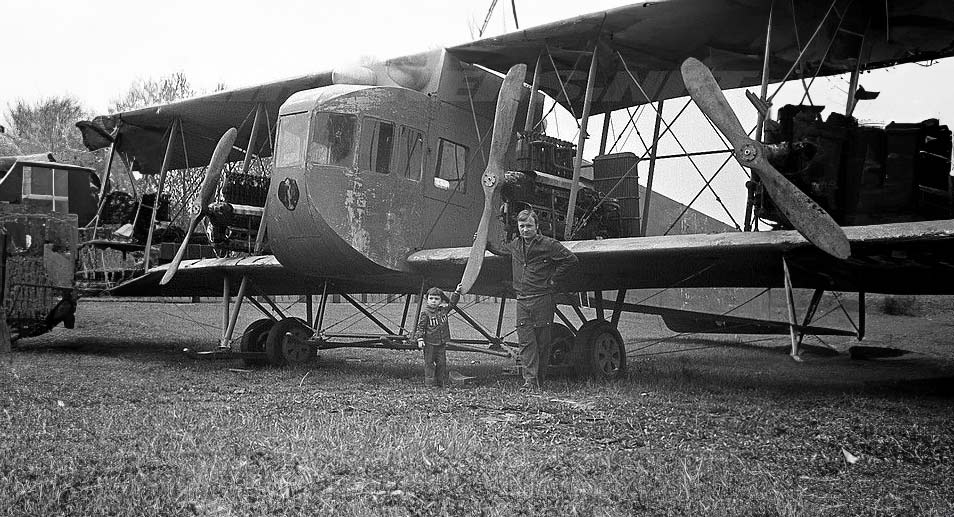Check into the history, design, and military significance of the Sikorsky Ilya Mourometz, a pioneering aircraft from 1913 that reshaped aviation dynamics.
The Sikorsky Ilya Mourometz, introduced in 1913, marked a revolutionary leap in aircraft design and capability. Its exceptional size, advanced design, and military significance during WWI made it an icon in early aviation history. The Sikorsky Ilya Mourometz is a testament to aviation ingenuity in the early 20th century. Developed by Russian aviation pioneer Igor Sikorsky, it stood out as one of the world’s first four-engine bombers, playing a pivotal role during World War I.
History of the Development of the Sikorsky Ilya Mourometz
In the early 20th century, aircraft design was still nascent, with many nations racing to achieve aerial superiority. Russia, amidst political and social upheavals, recognized the need for advanced aircraft, both for defense and to manifest its engineering prowess.
Igor Sikorsky, a young Russian aviation designer, envisioned an aircraft that could revolutionize long-distance flight. Inspired by the mythical figure Ilya Muromets, Sikorsky embarked on creating an aircraft that could live up to the legend. The program was initiated in 1912, and by December 1913, the Sikorsky Ilya Mourometz took its maiden flight.
Contrary to many aircraft of its time, it wasn’t just a military tool but also a symbol of Russian innovation. The aircraft did not have a NATO nickname since NATO was established much later, in 1949.
Design of the Sikorsky Ilya Mourometz
The Ilya Mourometz was a marvel in design for its era. Measuring 32 meters (105 feet) in wingspan and weighing approximately 4,500 kg (9,920 lbs), it was massive compared to its contemporaries. It featured an enclosed cabin, a rarity at the time, which could accommodate a crew of five.
One standout feature was its four-engine setup. Using four Argus As 2 water-cooled engines, each producing about 100 horsepower, it provided the aircraft with unmatched power, allowing it to carry significant payloads.
However, its size was both an advantage and a drawback. While it could carry more, it also presented a larger target and required longer runways. Its innovative features, like the onboard washroom and a heated cabin, made it unique and offered comfort during long flights.

Performance of the Sikorsky Ilya Mourometz
Driven by its four engines, the Ilya Mourometz could reach speeds up to 110 km/h (68 mph) with a service ceiling of around 3,000 meters (9,800 feet). It boasted a range of approximately 500 kilometers (310 miles), impressive for its time.
When compared to its contemporaries, the Ilya Mourometz was indeed advanced. Its multi-engine design provided redundancy and allowed it to sustain flight even if one engine failed, a significant advantage in terms of safety and reliability.
Military Use and Combat of the Sikorsky Ilya Mourometz
Primarily used by the Imperial Russian Air Service during WWI, the Ilya Mourometz was equipped with machine guns and could carry a bomb payload. Its impressive size and range made it an effective bomber, undertaking reconnaissance missions and bombing raids against Central Powers.
While the aircraft was technologically advanced, it faced challenges like limited numbers and a lack of adequately trained crews. Nevertheless, its impact was felt, and it had a decent operational success rate.
As for competitors, Germany had aircraft like the Gotha bombers, but the Ilya Mourometz’s uniqueness was its size and range. Post-WWI, the aircraft saw limited use and was eventually phased out, replaced by more modern designs.
The Sikorsky Ilya Mourometz was not just an aircraft; it was a symbol of ambition and innovation. While its operational history during WWI was mixed, its influence on bomber design and multi-engine aircraft was profound, marking a significant chapter in early aviation history.
Back to the Bombers section.